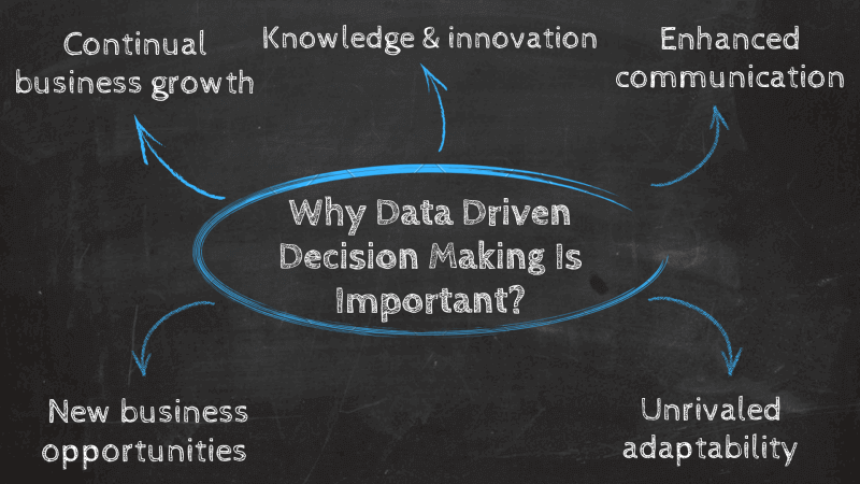
Data-Driven Decision Making in Digital Marketing
Data-driven decision-making in digital marketing refers to the process of using data and analytics to inform and guide marketing strategies, campaigns, and activities. The goal is to rely on empirical evidence and insights derived from various data sources to make informed choices, optimize performance, and achieve better results. Here are key aspects of data-driven decision-making in digital marketing:

1. Data Collection:
- Collect relevant data from various sources, including website analytics, social media platforms, customer relationship management (CRM) systems, and other relevant tools.
- Ensure data accuracy, completeness, and reliability to make informed decisions.
2. Data Analysis:
- Analyze data using statistical methods and machine learning algorithms to uncover patterns, trends, and insights.
- Utilize tools like Google Analytics, Adobe Analytics, or other analytics platforms to gain a comprehensive view of user behavior, traffic sources, and conversion metrics.
3. Customer Segmentation:
- Segment your audience based on demographics, behavior, interests, and other relevant criteria.
- Tailor marketing messages and campaigns to specific segments to increase relevance and engagement.
4. Personalization:
- Use data to create personalized experiences for users, such as personalized content, product recommendations, and targeted advertising.
- Leverage customer data to understand individual preferences and behaviors, improving the overall user experience.
5. A/B Testing:
- Conduct A/B tests to experiment with different variations of marketing elements, such as ad copy, images, and landing pages.
- Analyze the results to identify the most effective strategies and optimize campaigns accordingly.
6. Attribution Modeling:
- Implement attribution models to understand the contribution of each touchpoint in the customer journey.
- Attribute conversions and sales to specific channels, campaigns, or interactions to allocate resources effectively.
7. Real-time Monitoring:
- Monitor key performance indicators (KPIs) and metrics in real-time to quickly identify trends or issues.
- Use real-time data to make timely adjustments to campaigns and strategies.
8. Predictive Analytics:
- Employ predictive analytics to forecast future trends and user behavior.
- Anticipate market changes and customer needs to stay ahead of the competition.
9. ROI Measurement:
- Calculate the return on investment (ROI) for different marketing channels and campaigns.
- Allocate budget to the most effective channels based on their contribution to business objectives.
10. Continuous Optimization:
- Continuously optimize digital marketing strategies based on data insights and performance metrics.
- Adapt to changes in the market, user behavior, and technology to stay competitive.
By incorporating data-driven decision-making into digital marketing strategies, businesses can enhance their targeting, optimize resource allocation, and improve overall campaign effectiveness. It also enables marketers to adapt quickly to changing market conditions and consumer preferences.





